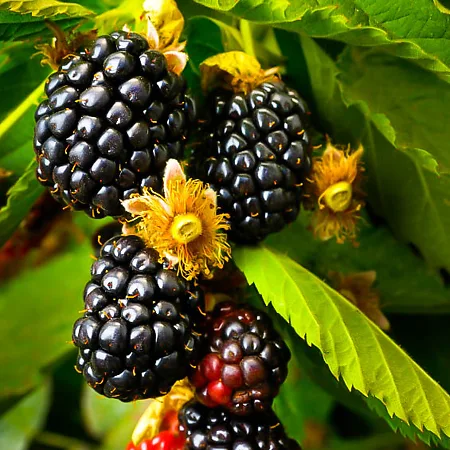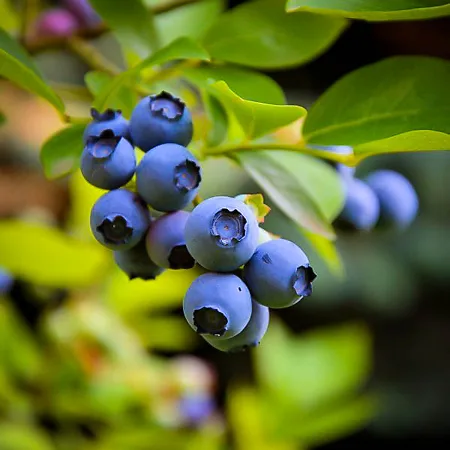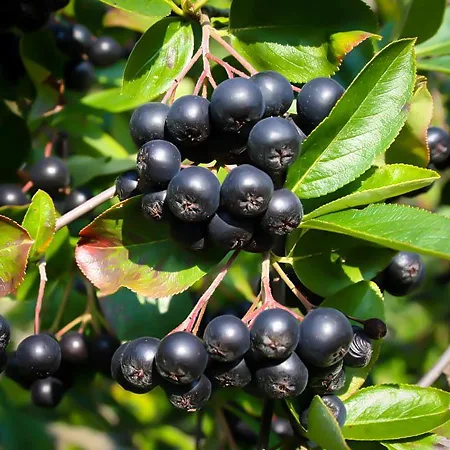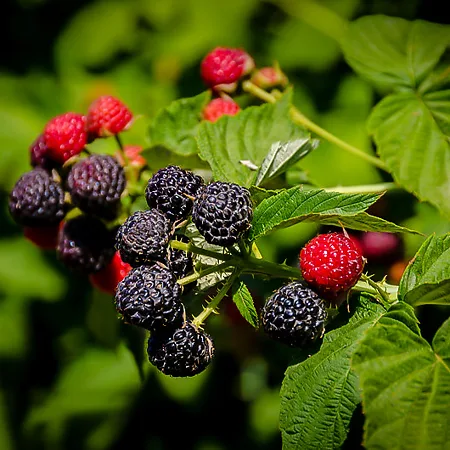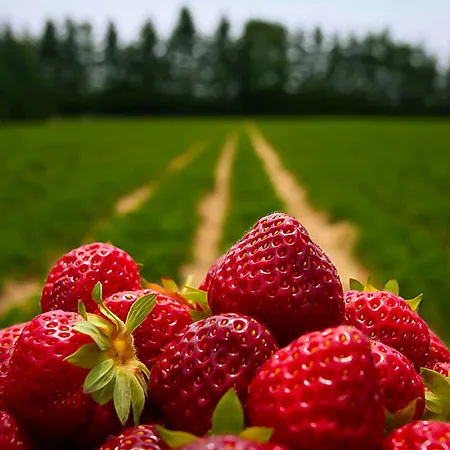Berry Bushes
Fresh berries are what summer is all about. Starting with strawberries the season moves through raspberries and on to blueberries and blackberries. With breakfast cereals, in muffins and pies, or simply fresh with ice-cream, berries are the dessert of choice all summer long. However, if you are buying yours at the supermarket, and paying dollars for a tiny packet, think that you could be growing them in your own garden with very little trouble and picking them by the basket-full, not fussing over tiny little trays.
Most people know that fruits like apples, peaches and oranges grow on trees that take up a lot of room. What many people don’t realize is that in a surprisingly small space you can grow lots and lots of berry fruits, because berries grow on bushes, not trees and those little bushes are often just smothered in fruit waiting to be picked.
Using Berry Bushes on Your Property
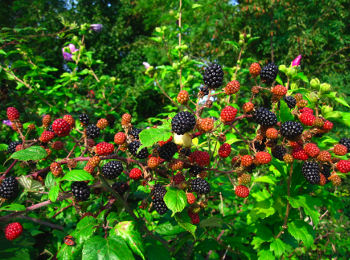
The more serious fruit-grower might also want to organize a special berry garden, where everything can be grown in organized rows and you can maximize the yield you get from the area you set aside for this garden. This way you can be bringing berries into your kitchen on a regular basis and providing great healthy food for your family for a long season.
Speaking of healthy, berries contain large amounts of the important health-promoting anti-oxidants, which everyone needs to consume regularly. Some, like strawberries and Brazel Berries, can even be grown in pots and containers, so that you don’t even need a garden at all to enjoy your own fresh berry crops.
Types of Berry Bushes
Berry Bushes are a diverse crowd, with each type having different needs and being grown in different ways, but all of them make a valuable addition to your garden. They vary from low creeping plants like strawberries, to medium-sized shrubs like blueberries. As well, there are blackberries and raspberries that make long, flexible branches that can be trained on wires or attached to trellis or fences.
Strawberry Bushes
Strawberry Bushes are mounding perennial plants that form a clump of leaves and carry their fruit close to the ground. They spread by sending out long stems that root some distance from the parent plant and make a new plant that will form berries the next year. The flowering stems are clusters of small white flowers that then form the strawberries.
Strawberry Bushes flower quite early in the season and the berries ripen quickly and are usually ready to harvest in May. Ever-bearing Strawberry Bushes are especially valuable in the garden, as they produce over a long season, instead of all at once, making them much more practical for smaller families.
Raspberry Bushes
Raspberries produce long stems – called canes – from the base of the plant each year and most grow 3 to 5 feet tall. The berries are carried on side-shoots produced from canes of the previous year. After the delicious fruit is harvested, the old canes are cut out to make room for the new ones. Brazel Berries are a new type of dwarf raspberry that can be grown in pots, so now even if you only have a terrace or balcony you can grow fresh berries.
Blackberry Bushes
Blackberries are similar, but produce stems up to 10 feet long that in modern varieties are thornless, making growing them much easier. The berries are up to an inch across, dark and juicy, blending really well with apples in pies or crumbles. For an interesting change, Golden Blackberry Bushes have yellow fruits instead of purple, but they taste just as good. A common misconception is that blackberries grow on a blackberry tree, but that this is a mistake and is often confused with a mulberry tree (a tree upwards of 20-30 feet that produces berries similar to blackberries).
Blueberry Bushes
Blueberries grow on bushes between 4 and 6 feet tall and 3 to 4 feet wide. The fruit usually ripens between July and September, so they follow on nicely from the earlier fruits like strawberries and raspberries. Sweetheart Blueberry Bushes have the added bonus of producing a smaller crop in the fall when grown in milder regions.
Although of course blueberry fruits are blue, there are also now Pink Lemonade Blueberry Bushes, which have beautiful pink berries with the same blueberry flavor – great for color variety in a fruit salad or muffins. Southern growers will probably favor Rabbiteye Blueberry Bushes since they do better in warmer areas. Toro Blueberry Bushes are compact enough to be grown in containers if you have no room in your garden.
Berry Bush Hardiness and Growing Conditions
Berry Bushes are usually hardy in zones 5 to 9, although Strawberry Bushes are hardy all the way into zone 3 and right up to zone 10, so everyone can grow them. Blueberries are usually hardy into zone 4 and grow right down into Texas, so can be enjoyed by everyone who has the necessary acid soil they need.
Berry Bushes all need well dug and fairly rich soil. They also need a regular water supply, especially when developing their fruits. They will grow in most kinds of soil, although in very sandy soils water need to always be available. Blueberries are an exception since they insist on being grown in acid soils. If you don’t have an acid soil, don’t worry – that just means more room for other kinds of Berry Bushes!
Planting and Initial Care
When you plant your new Berry Bushes, take notice of the necessary spacing for each type and be sure to allow enough room for them. If they are crowded, the yield of fruit will not be very good. Most need the first year to grow and although you may get some fruit, a little patience is needed for them to establish and grow the necessary shoots and branches. Once established you will be amazed at how much fruit one bush produces, but for family-sized crops it is best to plant several of each kind for a steady yield. As your Berry Bushes mature and grow they will produce bigger and bigger harvests.
The ground for your Berry Bushes should be well prepared, with organic material dug in. New plants should be given plenty of water at planting time and watered once a week for the first season. After that you only need to water when the soil is beginning to get noticeably dry, but don’t let your plants suffer from drought or the berries will be small and wrinkled.
Long-Term Care
The great thing about growing Berry Bushes is that they will continue to grow for many, many years and produce larger crops if they are treated properly. Pruning is important in maintaining the right age of wood for maximum cropping. Most fruit best on younger wood, so regular removal of older branches that have fruited is the usual kind of pruning required.
Blueberry Bushes are pruned more like regular flowering shrubs and to get nice, big plump berries they should be restricted in the amount of flowers they develop. Strawberry Bushes should be replanted with their own baby plants every three years. For maximum crops this means you will eventually have four areas altogether, ones with three, two and one-year-old plants and one freshly planted area. The one-year-old bushes give the biggest berries, but not the most, the three-year-old bushes give the highest yield but the berries are smaller.
Fertilizing and Watering
Regular fertilizer suited for each kind of Berry Bush is a good idea if you want to have the maximum yields. This can be ordinary fertilizer from a box, or you can use compost or rotted manure if you want to grow your food organically. Make sure your Berry Bushes get regular watering, especially during the time they are producing fruit, or your yield will be lower and the quality will not be so good. Mulch helps to conserve water, keep the roots cool and provide a clean surface to pick, and in the case of Strawberry Bushes, keeps the fruit clean – that is why they are called strawberries!
Protecting Your Bushes From Birds
If you have birds getting to your fruit before you do, a simple light-weight frame around your Berry Bushes can be built and a net draped over it for the period when the fruit is ripening.
Grow Your Own Food with Our Berry Bushes!
Growing your own food takes a little more time and attention than just growing ornamental plants, but the rewards in quality, flavor and cost are outstanding and well worth the small investment of time needed. Imagine your pride, and the joy of your family, when you are bringing in baskets of super-fresh fruit straight from the garden. That is when you will thank yourself for deciding to grow Berry Bushes.
